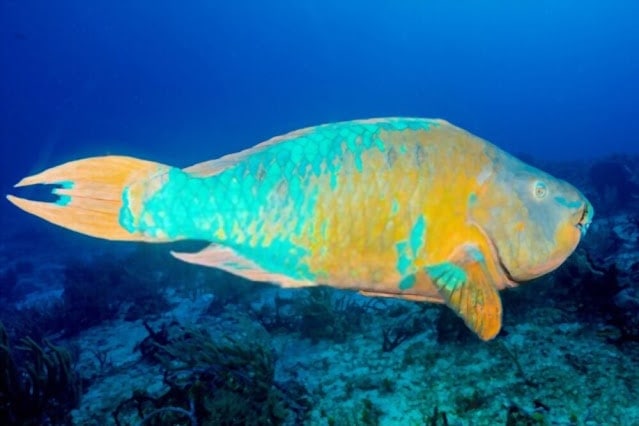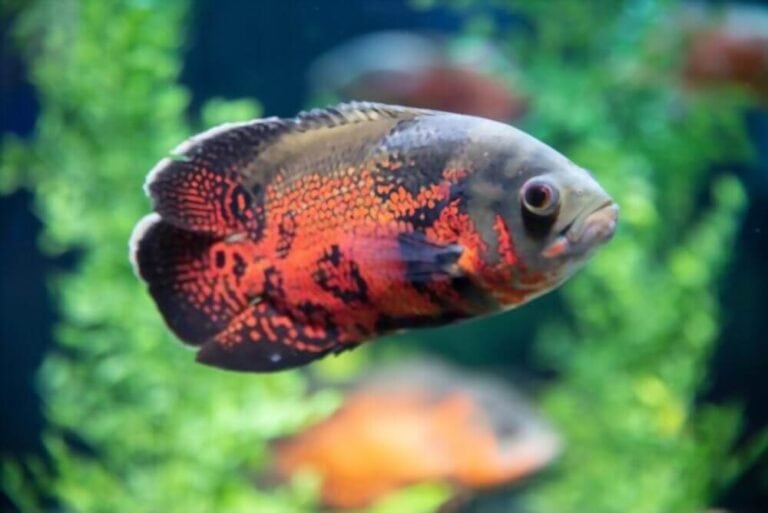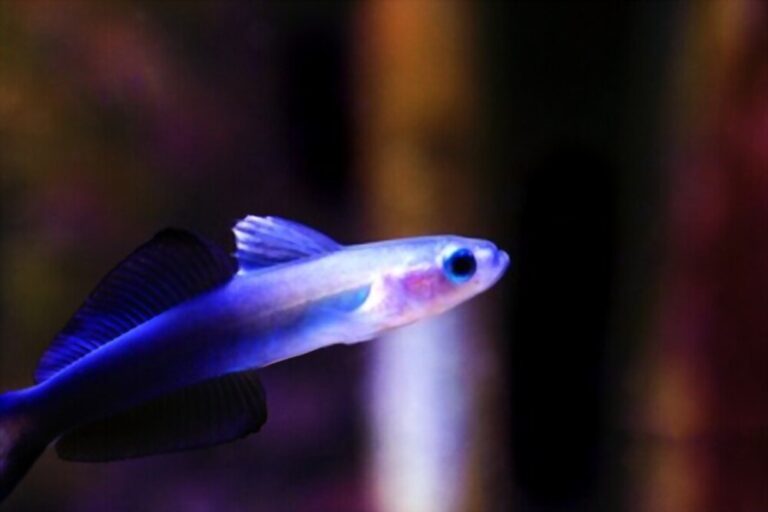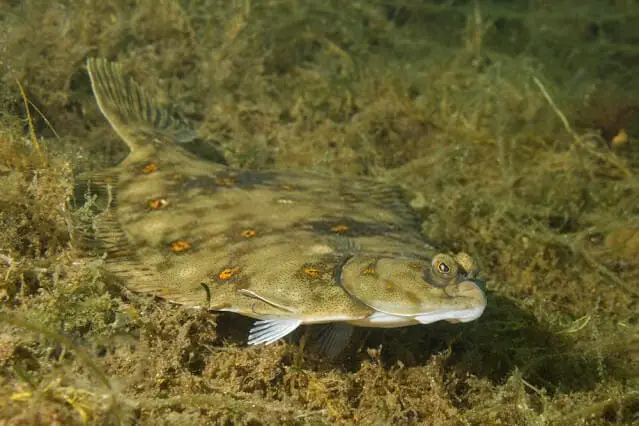Rabbitfish Guide: Species, Care, Diet, Reef Safe, & Tank Requirement
Rabbitfish belongs to one of the 25 groups of fish species that make up the Siganidae family, making up the order Perciformes in the hierarchy. Generally, these fish are called spine foot.
They are abundantly spread over a wide range of shallow waters from the red sea to Tahiti’s shores in French Polynesia.
They are brownish with a greenish olive-like tinge and colorful markings on the body. We will discuss caring for rabbitfish, including their diet and whether they are reef safe or not.
They are found to be inactive at night, which means they are diurnal. The name rabbitfish is given to them because of their small, somewhat rabbit-shaped mouth. They have a spiky spine with several poisonous fins, which help them to be avoided by predators.
Rabbitfish Species & Types
Hybridization and interbreeding among various species of them played an essential role in the diversification of the rabbitfish.
A Rabbitfish is a group of almost 29 species that belong to the family signaidae. The evolution of signaidae over a long time has continued because of hybridization and the complex reproductive behavior of them.
Though very little is known about their reproductive etiquette, Due to a great variety within the siganidae family. Thanks to the complex evolutionary background, there is a great extent of variation in their diet and distribution.
Foxface rabbitfish makes the most common pet for saltwater aquarium among all other species of the family. Below is the list of 29 famous species of the Siganidae family.
| Common names | Scientific names |
| Streamlined spinefoot | Siganus argentus |
| White-spotted spinefoot | Signus Canaliculatus |
| Blue-spotted spinefoot | Siganus corallines |
| Barred Spinefoot | Siganus doliatus |
| Mottled spinefoot | Siganus fuscescens |
| Goldlined spinefoot | Siganus guttatus |
| Bronze-lined rabbitfish | Siganus insomnis |
| Streaked spinefoot | Siganus javus |
| Labyrinth spinefoot | Siganus labyrinthodes |
| Golden-lined spinefoot | Siganus lineatus |
| Dusky spinefoot | Siganus luridus |
| Foxface | Siganus vulpinus |
| Vermiculated spinefoot | Siganus vermiculatus |
| Barhead spinefoot | Siganus virgatus |
| Black foxface | Siganus niger woodland |
| Blackeye rabbitfish | Siganus puelloids Woodland |
| Magnificent rabbitfish | Siganus magnificus |
| Masked spinefoot | Siganus puellus |
| Bicolored foxfce | Siganus uspi |
| Threeblotched rabbitfish | Siganus trispilos Woodland |
| Browns-potted spinefoot | Siganus stellatus |
| Shoemaker Spinefoot | Siganus sutor |
| Blotched foxface | Siganus unimaculates |
| Little spinefoot | Siganus spinus |
| Variegated spinefoot | Siganus randalli Woodland |
| Goldspotted spinefoot | Siganus punctatus |
| Marbled spinefoot | Siganus rivulatus Forsskal |
| Peppered spinefoot | Siganus punctatissimus |
Rabbitfish Size
Small but dark shady eyes characterize them. Their mouthparts are somewhat closely similar to that of rabbits. They don’t have separately spaced teeth. Instead, they have fused teeth that give them a rabbit-like appearance.
Most species of rabbitfish range from 25-35 centimeters, but the largest among rabbitfish can be 2 feet in length.
They are mostly marine and make up one of the most common pets for marine aquariums. Rabbitfish have dark shady colors.
They have a spiky bristly venomous spine with numerous fins and spikes on. Some of the pufferfish is also known to be rabbitfish.
They range in size from few inches to almost 2 feet long. Their body can also be covered with poisonous spikes, but their primary defensive strategy is puffing themselves up into a ball-like shape.
Rabbitfish Diet
They are generally herbivorous, as we have already discussed above. A maintained and balanced diet is still necessary for their proper nourishment and growth.
What Do Butterflyfish Eat? (A Complete Diet Guide)
The aquariums should exactly be according to their natural habitat. Algae is the favorite food of rabbitfish. So aquarium owners should set up commercially mercantile algae and sheets of algae along with the hideaways and aquarium walls.
You should occasionally provide other saltwater herbivore foods, including frozen shrimp and prawns, to the rabbitfish. Also, you should keep a few things in mind before feeding your fish.
Feeding your rabbitfish any non-herbivorous food once a day makes it important to remember that the food should be enough for the fish to finish it within 1 or 2 minutes. Any frozen food should properly be thawed before giving it to the fish.
Rabbitfish Reef Safe
Several aquarium owners suggest rabbitfish be one of the most friendly pets to ever have in the aquariums.
Calm behavior and compatible disposition made their colorful appearance earn a good reputation and a pace in our aquariums.
Apart from fascinating looks, their omnivorous but heavily herbivorous nature made them fantastic fish to have. Here are a few reasons are given below which make them reef safe.
They are also famous as cleaner fish in the aquarium with algae overgrown in them. They can eat up more algae than any algae masticating Surgeonfish.
All rabbitfish love algae, and it accounts for their staple and foremost food. They are very submissive, polite, and docile types of fish.
Unlike many aggressive fish species, rabbitfish are very friendly. You can keep them in aquariums in groupings. Still, it is better to separate them once they are fully grown as there are chances of them turning territory conscious, which ultimately triggers aggression.
But overall, they are wonderfully pleasant fish to deal with. They are small lusterless unanimated fish in the beginning, but as they grow, they become astonishingly colorful with a different colored mesh of striations.
Mostly the body is dark brown and sometimes with a greenish shade. The fish is indeed the fanciest and eye-catching fish ever to offer in the aquarium.
Rabbitfish Tank Size & Requirements
The Size of an aquarium is usually advised after considering the level of their growth that are maturity, body size, nature, endurance, genetic way of swimming, diet, and water requisites.
Guppy Tank Guide (Tank Size, Tank Mates, and Other Requirements
Many different types of fishes can be kept together even in a small aquarium when they are in the early stages of their lives. Still, this assemblage is only temporary housing as you need to separate them apart when they are on the verge of maturity.
While looking for the rabbitfish tank, you should keep in mind that being a marine fish requires a larger tank of a minimum size of 300 liters of water capacity. This is equivalent to 80 gallons, and a maximum size of almost 120 gallons is necessary to keep this fish.
While setting up the aquarium for rabbitfish, it should be kept in mind that they are diurnal, which means they are inactive at night, and naturally, they need hideaways like small rocks or corals to hide in from predators and sleep during the night.
If you did not provide hideouts in the aquarium, this fish could be violently hostile. You should maintain the aquarium’s water temperature at a narrow range of 22 to 25 degrees Celsius. The pH should slightly be alkaline, ranging from 8.1 to 8.4.
Tips for Keeping Rabbitfish Puffer
Rabbitfish puffer or pufferfish are called pufferfishes because they can puff in a massive amount of water in themselves and turn into a non-eatable balloon-like shape when they feel any danger of being attacked.
They are highly poisonous. Therefore, they are not commonly the target of fishermen. Accidently they are captured and are often not let go by the fishermen.
As they contain highly poisonous fins, spikes, and belly sacs, you should deal with them carefully and must be eliminated before they taint and defile the flesh.
In short, they should properly be cleaned before throwing them in the seafood market. The flesh of puffer is considered to be among one of the most delicious seafood.
Being a rabbitfish, it also eats green leafy small plants and most algae. Simultaneously, being highly venomous, it can even eat small marine mussels and other spineless animals. Its venom is hundreds of times more potent than killer cyanide poison.
They range in size from few inches dwarf marine puffer to 24 inches big freshwater puffer. If they are not lucky enough, their slow and uncoordinated swimming style can cost them their life.
Caring Tips for Your Foxface Rabbitfish
This saltwater rabbitfish species is one of the most common pets in a saltwater aquarium.
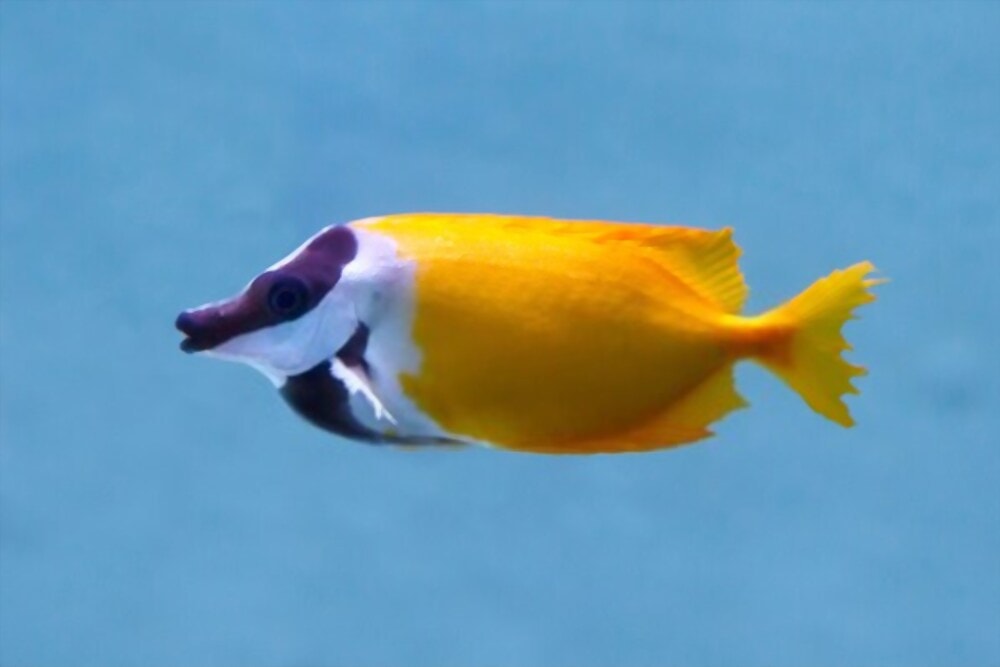
They are famous for their beaming intense yellow-colored. Their head has bronzed, black, and white striations. You can add the saltwater aquarium plants to the tank for making them feel comfortable.
When they feel agitated or disturbed or when a predator attacks them, their brownish color becomes spotted or blotched with different shades. The spine is equipped with venomous spikes.
The fins all over the body of Foxface are also spiky. However, one should always be careful while dealing with this fish.
Foxface rabbitfish is a terrifically faint-hearted species of fish. It requires large-sized tanks or saltwater aquariums with a lot of hideaways with dens to swim freely and hide respectively.
As mentioned above, they are extremely faint-hearted and almost harmless. That’s why they make up a fantastic inclusion in the aquariums. Poisonous spiky spines and fins protect this fish from the dangers of attack from other aggressive and hostile fish species.
You can keep foxface rabbitfish in aquariums with other members in large numbers. But, as soon as these fish reach their breeding age, they should either be kept separate or in a pair with the opposite sex.
It can allocate its territory and can be dangerous to other members of its species or other species.
Typically Foxface rabbitfish is grazing fish, so there should be a sufficient growth of algae and other small leafy plants in the aquarium for them to ruminate on. However, they are occasionally carnivorous.
Rabbitfish Facts
Almost 29 different species of rabbitfish are widely distributed in relatively warm, equatorial, and tropical waters of the Indian and Pacific oceans.
After the Suez Canal was constructed in 1854, many different species of fish migrated to the Mediterranean.
They like to inhabit the waters with coral reefs in the coastal areas. It can be found anywhere around the depths of 9 meters to 30 meters.
Its bright colored striated body makes it well-liked aquarium fish. Many species of this fish are monetarily important. Some fascinating facts about rabbitfish are below.
List Of Facts
- The length is greatly varied. The normal length that a rabbitfish acquires in its lifetime ranges from 10 to 21 inches.
- Most rabbitfish species are dark yellow-greenish and brown, with many colorful stripes or striations on their body and tail. The strips are of black, luminous yellow, and bright white color. The stripes which increase their beauty extend from their mouth to the top of their head and cover their eyes like a masked crown.
- All of the rabbitfish species don’t have these black stripes on the face and only Foxface rabbitfish have this privilege.
- Rabbitfish can efficiently change their body color during the hours of darkness (night). When they are in danger of being prey, they tend to mix themselves up with the colors of surrounding to become deceptive.
- Mostly, Rabbitfish is herbivorous and an opportunistic omnivorous animal. Algae is the favorite food of rabbitfish, and sometimes it also nips on the corals and small shrimps.
- Rabbitfish is very popular in cleansing up the seaweeds that cap over the rocks and walls of aquariums.
- Rabbitfish have a spine that is heavily armed with poison secreting glands. Although they are very polite and not hostile, they do not hang back to be defensive when attacked. Their poison, which is stronger than cyanide, makes them one of the most avoided animals by predators.
- They can live up to 8 to 12 years in captivity.
- Adults are very loyal to their partners. They make couples when they are noticeably larger than 4 inches. They spend their whole life with their partner until one of them dies.
- Female rabbitfish spawns in the open sea. Male circulates the female at the time of spawning and releases its sperms simultaneously in the water to fertilize the eggs.
FAQs
Are Rabbitfish aggressive?
Unlike many aggressive fish species, rabbitfish are very friendly and can be kept in aquariums in groupings. But it is better to separate them once they are fully grown as there are chances of them turning territory conscious, which ultimately triggers aggression.
What are rabbitfish predators?
Any marine predator who preys on small fishes can be proved to be a predator of rabbitfish. But their venomous spikes and fins make them less vulnerable to predators because most predators tend to avoid them because of their venom.
Are Foxface Rabbitfish poisonous?
Yes! Foxface rabbitfish is poisonous. Poisonous spiky spines and fins protect this fish from the dangers of attack from other aggressive and hostile fish species.
Can you eat Rabbitfish?
Yes! You can eat Rabbitfish, and it can be proved to be very economical for the fishermen. Although their flesh is very tough, rabbitfish still make good tasty curries no matter how cooked.
What do Foxface Rabbitfish eat?
Foxface Rabbitfish love to eat Algae, and it is the most favorite food of Foxface Rabbitfish. Besides Algae, you can also give them other saltwater herbivore foods, including frozen shrimp and prawns occasionally.
